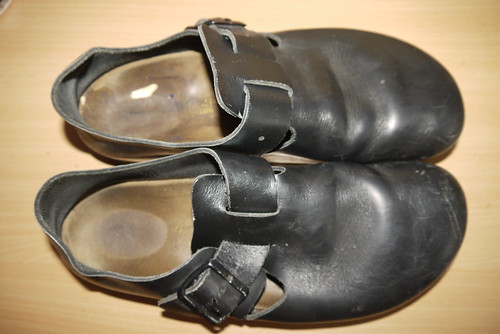Clearly, HIV gp120 is a C.I. Disperse Blue 148 potent inducer of HIV replication in major HIV-contaminated CD4 T cells, despite the fact that the mechanisms fundamental this increased replication are undefined.NF-kB is a transcription issue that is a key regulator of inflammation, apoptosis, immune activation, cell proliferation, and viral replication. Multiple stimuli are able of activating NF-kB like, but not constrained to, proinflammatory cytokines (e.g., TNF-a), activating cellular receptors (e.g., TCR), viral proteins (e.g., EBV-LMP-1), DNA cleavage, chemotherapeutics (doxorubicin), and oxidative stress. We have formerly assessed the involvement of NF-kB household members in HIV replication that happens throughout the  peak of virus-induced dying by demonstrating that a super repressor kind of IKBa blocks HIV replication, thus implicating NF-kB family associates as the dominant transcriptional system that drives such HIV replication [twenty]. We next requested no matter whether gp120-induced HIV replication is mediated by transcriptional upregulation. Initial, we dealt with cells from HIV-infected patients with gp120, in the presence or absence of a dominant negative kind of the NF-kB inhibitor IkBa. Cells were then cultured overnight and p24 creation monitored. Cells handled with gp120 and transfected with vector handle had a substantial induction of p24 in contrast to these not taken care of with gp120. The cells transfected with DN IkBa had significantly impaired p24 creation, indicating that gp120 induction of HIV replication is NF-kB dependent (Determine 2A). Next, we transfected Jurkat T cells with a luciferase reporter build beneath management of HIV LTR. In parallel, TK-Renilla was co-transfected as a handle for transfection efficiency. Cells were then stimulated with gp120/sCD4 in order to isolate the effect of gp120 signaling to signaling only via the CXCR4 receptor and luciferase expression was calculated and normalized to TKRenilla (Figure 2B). Certainly, gp120 remedy increased luciferase expression demonstrating a transcriptional mechanism underlying the effects of HIV gp120 on HIV replication. This effect required caspase eight because the Jurkat-derived caspase eight deficient mobile line, I9.2, which expresses CXCR4 (MCF in isotype Jurkat 31.8 CXCR4 in Jurkat = seventy three.6 MCF isotype in I9.2 = 31.3 CXCR4 in I9.two = 69.4,) failed to upregulate HIV LTR activity right after remedy with gp120 (Determine 2B). Of curiosity, I9.two cells also failed to upregulate LTR exercise in response to TNF, which also induces caspase eight activation. Lastly, we observed that 10652602only gp120, but not SDF-1a, which is the natural ligand for CXCR4, brought on upregulation of HIV LTR action in a caspase eight dependent way (Determine 2C).
peak of virus-induced dying by demonstrating that a super repressor kind of IKBa blocks HIV replication, thus implicating NF-kB family associates as the dominant transcriptional system that drives such HIV replication [twenty]. We next requested no matter whether gp120-induced HIV replication is mediated by transcriptional upregulation. Initial, we dealt with cells from HIV-infected patients with gp120, in the presence or absence of a dominant negative kind of the NF-kB inhibitor IkBa. Cells were then cultured overnight and p24 creation monitored. Cells handled with gp120 and transfected with vector handle had a substantial induction of p24 in contrast to these not taken care of with gp120. The cells transfected with DN IkBa had significantly impaired p24 creation, indicating that gp120 induction of HIV replication is NF-kB dependent (Determine 2A). Next, we transfected Jurkat T cells with a luciferase reporter build beneath management of HIV LTR. In parallel, TK-Renilla was co-transfected as a handle for transfection efficiency. Cells were then stimulated with gp120/sCD4 in order to isolate the effect of gp120 signaling to signaling only via the CXCR4 receptor and luciferase expression was calculated and normalized to TKRenilla (Figure 2B). Certainly, gp120 remedy increased luciferase expression demonstrating a transcriptional mechanism underlying the effects of HIV gp120 on HIV replication. This effect required caspase eight because the Jurkat-derived caspase eight deficient mobile line, I9.2, which expresses CXCR4 (MCF in isotype Jurkat 31.8 CXCR4 in Jurkat = seventy three.6 MCF isotype in I9.2 = 31.3 CXCR4 in I9.two = 69.4,) failed to upregulate HIV LTR activity right after remedy with gp120 (Determine 2B). Of curiosity, I9.two cells also failed to upregulate LTR exercise in response to TNF, which also induces caspase eight activation. Lastly, we observed that 10652602only gp120, but not SDF-1a, which is the natural ligand for CXCR4, brought on upregulation of HIV LTR action in a caspase eight dependent way (Determine 2C).
Interleukin Related interleukin-related.com
Just another WordPress site
